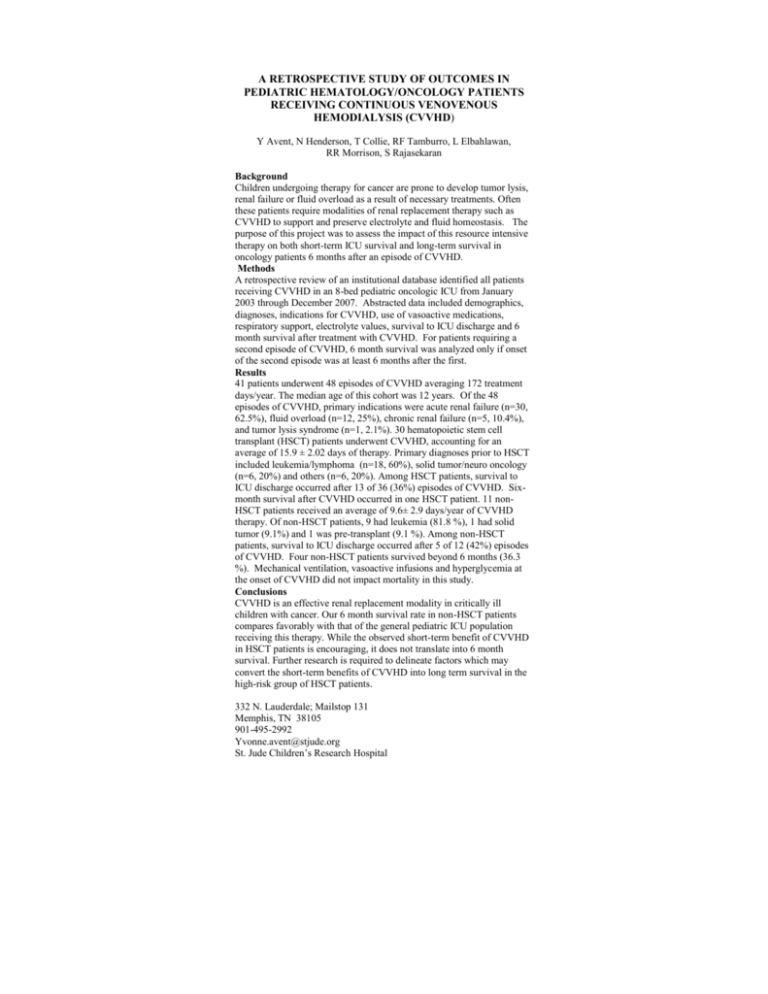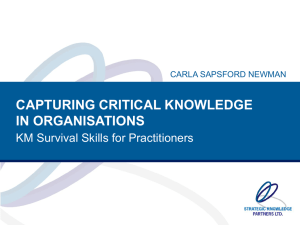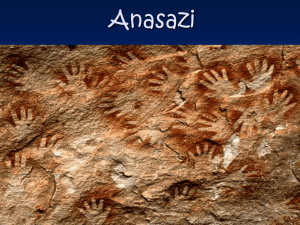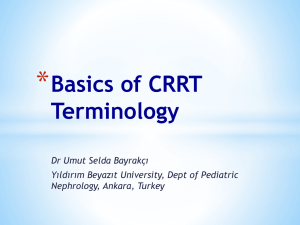A RETROSPECTIVE STUDY OF OUTCOMES IN PEDIATRIC
advertisement

A RETROSPECTIVE STUDY OF OUTCOMES IN PEDIATRIC HEMATOLOGY/ONCOLOGY PATIENTS RECEIVING CONTINUOUS VENOVENOUS HEMODIALYSIS (CVVHD) Y Avent, N Henderson, T Collie, RF Tamburro, L Elbahlawan, RR Morrison, S Rajasekaran Background Children undergoing therapy for cancer are prone to develop tumor lysis, renal failure or fluid overload as a result of necessary treatments. Often these patients require modalities of renal replacement therapy such as CVVHD to support and preserve electrolyte and fluid homeostasis. The purpose of this project was to assess the impact of this resource intensive therapy on both short-term ICU survival and long-term survival in oncology patients 6 months after an episode of CVVHD. Methods A retrospective review of an institutional database identified all patients receiving CVVHD in an 8-bed pediatric oncologic ICU from January 2003 through December 2007. Abstracted data included demographics, diagnoses, indications for CVVHD, use of vasoactive medications, respiratory support, electrolyte values, survival to ICU discharge and 6 month survival after treatment with CVVHD. For patients requiring a second episode of CVVHD, 6 month survival was analyzed only if onset of the second episode was at least 6 months after the first. Results 41 patients underwent 48 episodes of CVVHD averaging 172 treatment days/year. The median age of this cohort was 12 years. Of the 48 episodes of CVVHD, primary indications were acute renal failure (n=30, 62.5%), fluid overload (n=12, 25%), chronic renal failure (n=5, 10.4%), and tumor lysis syndrome (n=1, 2.1%). 30 hematopoietic stem cell transplant (HSCT) patients underwent CVVHD, accounting for an average of 15.9 ± 2.02 days of therapy. Primary diagnoses prior to HSCT included leukemia/lymphoma (n=18, 60%), solid tumor/neuro oncology (n=6, 20%) and others (n=6, 20%). Among HSCT patients, survival to ICU discharge occurred after 13 of 36 (36%) episodes of CVVHD. Sixmonth survival after CVVHD occurred in one HSCT patient. 11 nonHSCT patients received an average of 9.6± 2.9 days/year of CVVHD therapy. Of non-HSCT patients, 9 had leukemia (81.8 %), 1 had solid tumor (9.1%) and 1 was pre-transplant (9.1 %). Among non-HSCT patients, survival to ICU discharge occurred after 5 of 12 (42%) episodes of CVVHD. Four non-HSCT patients survived beyond 6 months (36.3 %). Mechanical ventilation, vasoactive infusions and hyperglycemia at the onset of CVVHD did not impact mortality in this study. Conclusions CVVHD is an effective renal replacement modality in critically ill children with cancer. Our 6 month survival rate in non-HSCT patients compares favorably with that of the general pediatric ICU population receiving this therapy. While the observed short-term benefit of CVVHD in HSCT patients is encouraging, it does not translate into 6 month survival. Further research is required to delineate factors which may convert the short-term benefits of CVVHD into long term survival in the high-risk group of HSCT patients. 332 N. Lauderdale; Mailstop 131 Memphis, TN 38105 901-495-2992 Yvonne.avent@stjude.org St. Jude Children’s Research Hospital









